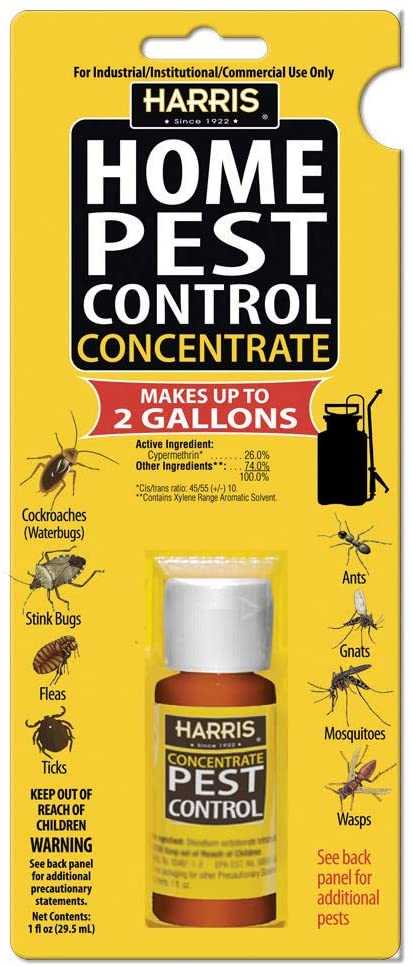Experienced A1 Exterminators Charlotte NC - Rapid and Dependable Solutions
Experienced A1 Exterminators Charlotte NC - Rapid and Dependable Solutions
Blog Article
Bed Pest Treatment Breakdown: Comparing Chemical Vs. Non-Chemical Solutions
In the realm of bug control, particularly when managing the relentless problem of bed insects, the selection between chemical and non-chemical treatment solutions can be an essential one. Both strategies offer unique benefits and drawbacks, influencing factors such as performance, safety factors to consider, and general cost. By checking out the nuanced information of each approach, a clearer understanding of which path to go after in addressing a bed pest invasion can be obtained.
Effectiveness of Chemical Treatments
Chemical treatments for bed pest problems have been widely acknowledged for their powerful and quick effectiveness in removing these parasites. When considering the efficiency of chemical therapies, it is vital to recognize that they can offer a fast and comprehensive solution to a bed insect issue.
In addition, chemical therapies have the advantage of offering residual results, implying that they can remain to get rid of bed pests also after the initial application. This residual activity is specifically beneficial in combating any possible re-infestations. Furthermore, the rapid action of chemical therapies can bring relief to people facing serious bed insect problems, permitting them to reclaim control of their home promptly.
Security Interest In Chemical Solutions
One important aspect that requires mindful factor to consider when using chemical solutions for bed bug therapy is making sure the safety of passengers and the atmosphere. Direct exposure to certain chemicals made use of in bed insect treatments can lead to respiratory problems, skin inflammation, or other damaging reactions, particularly in individuals with pre-existing problems or sensitivities.
Furthermore, the ecological effect of chemical solutions is an additional considerable consideration. Some pesticides used in bed pest treatments may be dangerous to useful bugs, wild animals, and ecological communities if they leach into the soil or water systems. It is vital to utilize chemical treatments deliberately, adhering to security standards, and considering less hazardous choices to minimize these dangers and ensure the safe and reliable monitoring of bed bug infestations.
Benefits of Non-Chemical Techniques
Taking into consideration the potential safety and security issues and environmental influence associated with chemical solutions for bed insect therapy, discovering non-chemical methods presents a promising option with a number of unique advantages. Non-chemical treatments are ecologically friendly, as best outdoor pest control they do Full Article not contribute to air or water air pollution, making them a lasting selection for parasite control.
In addition, non-chemical services can be effective in targeting bed bugs, including hard-to-reach locations where chemical therapies might not pass through - A1 charlotte bed bug exterminator. Techniques such as warm therapy, vacuuming, steam cleaning, and bed mattress encasements offer detailed eradication without the usage of dangerous chemicals.
Limitations of Non-Chemical Treatments

Furthermore, non-chemical treatments usually require several applications to accomplish effective elimination. This can be taxing and may not always guarantee full elimination of all bed bugs and their eggs, particularly in hard-to-reach or surprise areas.
Moreover, the success of non-chemical therapies heavily counts on appropriate application and thoroughness, which can be testing for people without specialist experience. Inadequate application of non-chemical methods may cause insufficient obliteration, causing consistent infestations and the need for added treatments.
Consequently, while non-chemical therapies have their advantages, it is important to recognize site here these limitations and consider them when establishing the most effective strategy for taking care of bed pest invasions.
Price Contrast: Chemical Vs. Non-Chemical Options
Offered the limitations connected with non-chemical therapies, a vital element to evaluate in the context of bed bug administration is the cost comparison in between chemical and non-chemical choices. In comparison, non-chemical therapies like warmth treatment or heavy steam can be extra expensive, with prices varying from $1,000 to $6,000 for an entire home. While the first price of chemical treatments might appear lower, several treatments might be required to totally get rid of the problem, possibly boosting the total price.
Conclusion

Considering the possible safety concerns and ecological effect associated with chemical options for bed bug treatment, exploring non-chemical methods provides an encouraging option with a number of unique benefits.Provided the restrictions connected with non-chemical treatments, a crucial element to evaluate in the context of bed bug administration is the cost comparison between chemical and non-chemical choices. In contrast, non-chemical treatments like warm treatment or heavy steam can be a lot more pricey, with prices varying from $1,000 to $6,000 for an entire home. While the first cost of chemical therapies may seem reduced, multiple therapies may be needed to totally eliminate the infestation, possibly increasing the total price.In verdict, when comparing chemical and non-chemical bed pest therapy choices, it is essential to think about performance, security, advantages, constraints, and cost.
Report this page